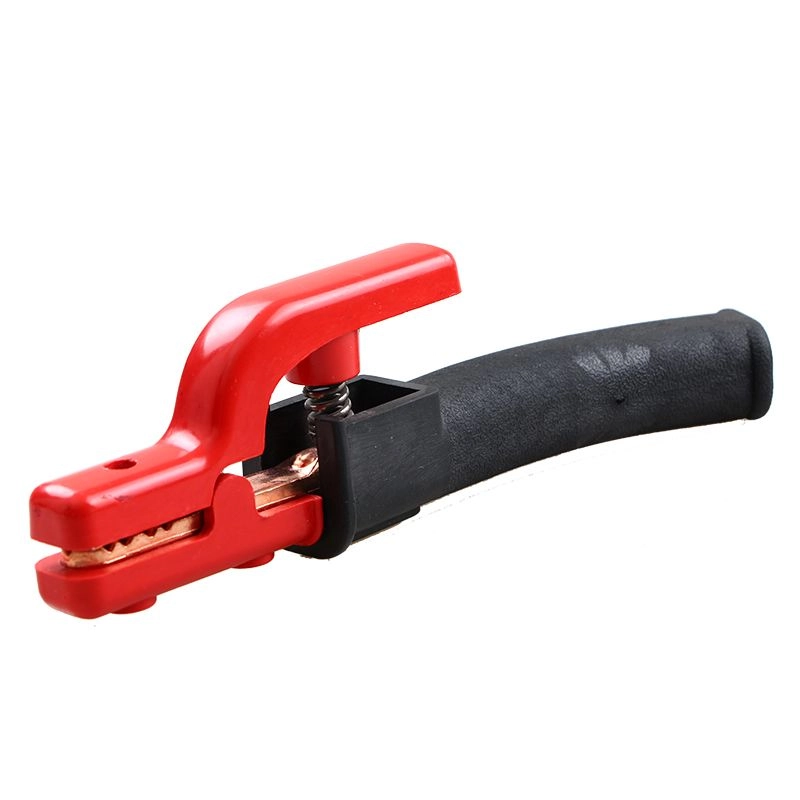Stick Welding Safety: How to Prevent Electrical Shock from Your Electrode
As a manufacturer of protective welding equipment, I, Allen, have seen firsthand how critical safety is in every weld. For professionals like Mark Thompson, who source the best equipment for their teams, understanding the risks is just as important as the quality of the gear itself. One of the most severe and often underestimated dangers in arc welding is electrical shock. It can happen in an instant, with devastating consequences. This article is your comprehensive guide to understanding and preventing this hazard. We will dive deep into the mechanics of electric shock in the stick welding process, explore best practices for handling your electrode, and highlight the protective measures that keep a welder safe on the job.
What is Electrical Shock in Arc Welding and Why is it a Major Hazard?
In any arc welding process, including stick welding, an electrical circuit is created to generate the heat needed to weld metal. This circuit starts at the welding machine, flows through a cable to the electrode holder and electrode, across the welding arc to the workpiece (the metal being welded), and back to the welding machine through a ground clamp and cable. The welder works in very close proximity to this live circuit. An electric shock occurs when a person's body accidentally becomes a part of this circuit, allowing the electric current to pass through them.
This is a significant hazard because the human body conducts electricity. The moment you touch two metal objects that have voltage between them, you complete the circuit. In arc welding, this can happen by touching the live electrode or metal parts of the electrode holder with one hand while another part of your body touches the grounded metal you are working on. The result can range from a mild jolt to severe injury or even fatality. According to the National Institute for Occupational Safety and Health (NIOSH), understanding this basic principle is the first step in preventing this dangerous hazard during any weld.
Can You Explain the Two Main Types of Electrical Shock a Welder Faces?
When discussing electrical hazards in welding operations, it's important to differentiate between the two types of electric shock a welder might encounter. The first, and most severe, is primary voltage shock. This occurs when someone touches a live component inside the welding machine itself or comes into contact with the input power wiring. This is a high-voltage shock (from 115 to over 460 volts) and is extremely dangerous, often resulting in electrocution. This type of shock typically happens when performing maintenance or repairs on the equipment without first disconnecting it from the main power supply.
The second, and more common type of shock for a welder, is secondary voltage shock. This happens when the welder touches a part of the live welding circuit, such as the stick welding electrode. The voltage in the secondary circuit is lower (typically ranging from 20 to 100 volts), but it is still a very serious hazard. Even at this lower voltage, a shock can cause severe burns, muscle contractions, and falls. If the current happens to pass through the chest, it can disrupt the heart's rhythm, which can be fatal. The vast majority of welding safety procedures are designed to prevent this secondary voltage shock during the weld.
What are the Key Factors that Increase the Risk of Electrical Shock During the Welding Process?
Several conditions can dramatically increase the risk of a welder receiving an electric shock during the welding process. Perhaps the most significant factor is moisture. Water is an excellent conductor of electricity, and welding in wet or damp environments is extremely hazardous. Perspiration, high humidity, or standing on a wet floor can lower the body's electrical resistance, meaning a dangerous amount of current can pass through the welder at a lower voltage. This is why safety protocols for welding operations always emphasize keeping the weld area and your equipment dry.
Poorly maintained welding equipment is another major culprit. Worn, cracked, or damaged insulation on the electrode holder or welding cables creates a direct path for electricity to find its way to the welder. Bare insulation or frayed wires are an immediate hazard. Additionally, working in confined spaces or in awkward welding positions where the welder might be forced into contact with the workpiece increases the risk. The combination of a damp environment and damaged equipment is a recipe for disaster when you weld.
How Can a Welder Properly Insulate Themselves to Prevent Electrical Shock?
The key to preventing electric shock is to insulate yourself from the welding circuit. This means wearing the right personal protective equipment (PPE) and ensuring it is in good condition. The most critical piece of PPE for this purpose is a pair of dry, hole-free welding gloves. Your hands are closest to the electrode, and quality gloves provide the primary layer of insulation. At our factory, we manufacture heavy-duty welding gloves made from thick, durable leather specifically to provide this protection. Never weld with wet or damaged gloves.
Beyond gloves, it's essential to insulate yourself from the work and ground. This means wearing rubber-soled work boots and standing on a dry, insulating surface, such as a rubber mat or a dry wooden pallet, especially if you are working on a metal floor or in damp conditions. Dry clothing is also part of your insulation. Never let the live electrode or electrode holder touch your bare skin or wet clothing. Proper welding safety dictates that a welder must always keep their body completely insulated from both the electrode circuit and the ground circuit.
Why is Maintaining Your Welding Equipment, Especially the Electrode Holder, So Important?
Your welding equipment is the barrier between you and the live welding current. Regular inspection and maintenance are not just about performance; they are fundamental safety procedures. Before starting any weld, you should conduct a thorough inspection of all your gear. Pay special attention to the welding cables. Look for any cuts, cracks, or bare spots in the insulation. A damaged cable is a live wire waiting to cause a shock and should be repaired or replaced immediately.
The electrode holder (also known as a stinger) is the component you handle most, and its condition is paramount. The jaws that grip the welding electrode must be clean and strong to ensure a good connection, but the handle and lever must have thick, intact insulation. Over time, the heat and spatter from the weld can cause this insulation to crack or break off. If the electrode holder insulation is compromised, you could easily receive an electric shock. A stick welder must make it a habit to inspect the welding electrode holder before every single use. Never use an electrode holder that isn't in perfect, good condition.

What are the Best Practices for Handling a Stick Welding Electrode to Avoid Contact?
The stick welding electrode is the "business end" of the welding process. Once it's clamped in the electrode holder, it becomes electrically live. Proper handling techniques are essential to prevent electrical shock. The number one rule is to never touch the electrode or any metal parts of the electrode holder with your bare skin or wet gloves. Even when changing the electrode, a welder should always wear dry gloves.
When you are not actively performing a weld, never allow the electrode holder to rest on your body or on a conductive surface that is grounded. Many welders have received a shock by tucking the holder under their arm. When you need to put the holder down, place it on a non-conductive, dry surface. After you have finished with a welding electrode, use your gloved hand or pliers to remove the remaining welding electrode stub from the holder. Never assume the power is off. Treat every part of the welding circuit as if it is live at all times. This mindset is the core of safe arc welding.
Does the Electrode Angle and Welding Position Affect Electrical Shock Risk?
Yes, the welding position can significantly influence the risk of electric shock. Positions like flat or horizontal welding on a bench generally allow the welder to maintain a stable, insulated posture away from the workpiece. However, when a welder must work in more challenging positions, the hazard increases.
Overhead welding and vertical welding are particularly risky. In these positions, sparks and molten metal can fall onto the welder, and it's much more difficult to keep the body fully insulated from the base metal. There's a greater chance that the electrode holder or electrode could accidentally make contact with the welder's arm, shoulder, or even their head. When performing a weld in these different welding positions, it is crucial to pay extra attention to your body positioning and ensure all of your protective equipment, like our welding protective clothing, is properly worn to provide a complete barrier. Maintaining the correct electrode angle not only produces a better weld but also helps keep the live electrode safely away from your body.

What Immediate Steps Should Be Taken if an Electric Shock Occurs in the Weld Area?
Knowing how to respond in an emergency is a critical part of welding safety. If you witness a fellow welder receiving an electric shock, your immediate actions can be life-saving. The first and most important rule is: do not touch the victim. If you touch them while they are still in contact with the live electrical circuit, the current will pass through you as well, and you will become a second victim.
The priority is to break the electrical connection. The fastest way to do this is to turn off the main power switch at the welding machine or at the circuit breaker for the weld area. If you cannot reach the power switch quickly, use a non-conductive object, like a dry piece of wood, a rubber mat, or a thick, dry rope, to push the victim away from the electrical source or to knock the electrode holder out of their hand. Once the victim is clear of the circuit and the power is off, check for breathing and a pulse, and call for emergency medical help immediately.
Are AC and DC Welders Different When it Comes to Electrical Shock Hazard?
Yes, there is a notable difference in the hazard posed by alternating current (AC) and direct current (DC) welding machines. Both can be deadly, but AC and DC currents affect the human body differently. According to the Occupational Safety and Health Administration (OSHA), alternating current is generally considered more dangerous than direct current at the same voltage.
This is because the continuous reversing of alternating current can cause a victim's muscles to contract and freeze, a phenomenon known as "tetanic contraction." This can make it impossible for the person to let go of the live electrical source, which increases the duration of exposure and the severity of the injury. Direct current is more likely to cause a single, convulsive contraction that often throws the victim clear of the circuit. While a stick welder using either type of current must follow all safety protocols, those using AC welders should be aware of this increased "let-go" hazard.
Beyond the Electrode: What Other Safety Procedures Should Every Welder Follow?
While preventing electrical shock is a top priority, a comprehensive approach to welding safety covers all potential hazards in the weld area. The welding arc itself produces intense ultraviolet radiation that requires proper eye and skin protection. Always use a welding helmet with the correct shade lens for the amperage of your weld. Full-body coverage with flame-resistant clothing protects your skin from both radiation and hot spatter.

Proper ventilation is also crucial. The welding process generates fumes and gases that can be harmful if inhaled. A welder should always work in a well-ventilated space or use a local exhaust ventilation system to draw fumes away from their breathing zone. Finally, always be aware of fire hazards. Keep flammable materials far away from the weld area and have a fire extinguisher nearby. A safe welder is one who respects every hazard associated with the weld, not just the electrode.
Key Takeaways for Preventing Electrical Shock in Welding:
- Always Assume the Circuit is Live: Treat the electrode and electrode holder as if they are always electrically live.
- Inspect Your Equipment: Before every weld, check your electrode holder, cables, and all connections for damage or wear. Do not use faulty equipment.
- Stay Dry: Never weld in wet or damp conditions. Keep your gloves, clothing, and the weld area as dry as possible to prevent electric shock.
- Insulate Your Body: Wear dry gloves in good condition, rubber-soled boots, and stand on an insulating mat to keep your body completely isolated from the welding circuit.
- Handle the Electrode Safely: Never touch the electrode with bare skin or wet gloves. Do not carry the electrode holder under your arm or allow it to touch your body.
- Know the Emergency Plan: Understand how to safely respond if a shock occurs. Your first step is to shut off the power, not to touch the victim.






